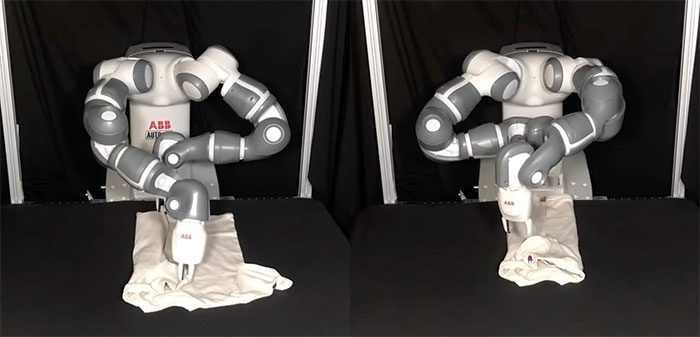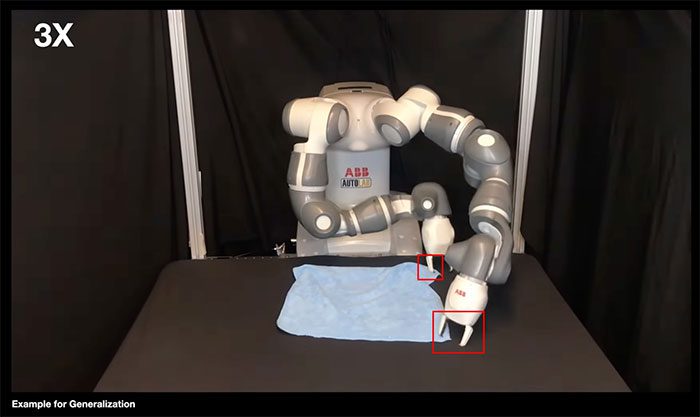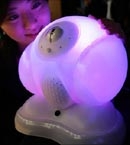Researchers at AUTOLAB, University of California, Berkeley, have introduced a new robot model with a control system designed to fold a random 30-40 pieces of clothing per hour, setting a new speed record previously established in automated robot control programs.
Although the robot, named SpeedFolding, does not pose any threat to the jobs of housekeepers or caretakers, watching it fold clothes is quite adorable and entertaining.
SpeedFolding utilizes a neural network called the BiManual Manipulation Network, which serves as a control center for its components, including a pair of industrial robotic arms and a camera system mounted above its body. This camera system analyzes each piece of clothing placed in front of the robot, allowing SpeedFolding to fold the clothing neatly in under two minutes, with a success rate of 93%.


Robot SpeedFolding can fold 30-40 pieces of clothing per hour.
SpeedFolding has learned to fold clothes quickly and accurately thanks to data from 4,300 folding cases that scientists have integrated into its neural system.
A unique feature of SpeedFolding is that it is equipped with a pair of arms with “hooked fingers”, components made using 3D printing technology. Although small, these are very useful as they enhance the robot’s gripping ability.

This robot is equipped with a pair of arms with “hooked fingers”.
However, SpeedFolding is quite expensive, costing around $58,000, so it will be a long time before this robot is commercialized and becomes a “friend of every household”.




















































